This article contains spoilers for cameo characters in The Flash, which is unfortunately one of the only things there even is to spoil in this movie. (That’s the point.)
That The Flash exists at all is a minor miracle.
One would be forgiven for assuming that the property was cursed. Although the project has been in development at Warner Bros. in one form or another since the 1980s, it really started gaining momentum in 2013, following the release of Zack Snyder’s Man of Steel. As part of its plans for a shared universe built around the iconic DC characters, Warners made plans for a Flash movie to hit theaters at some point in 2016, as a prelude to Justice League.
That obviously didn’t happen. Inevitably, the release date moved: March 23, 2018; March 16, 2018; 2021; July 1, 2022. This always seemed optimistic. Even before Man of Steel galvanized the studio’s plans for a shared universe, directors David S. Goyer and Shawn Levy had signed up and walked away from the project. The trend accelerated as the deadline loomed: Seth Grahame-Smith, Rick Famuyiwa, John Francis Daley and Jonathan Goldstein. This is to say nothing of the directors who turned it down: Sam Raimi, Marc Webb, and probably Robert Zemeckis and Matthew Vaughn.
Then there was the chaos involving star Ezra Miller, who had been cast as the Flash in Zack Snyder’s sequel to Man of Steel, Batman v Superman: Dawn of Justice. In April 2020, a viral video seemed to show Miller choking a fan in an altercation. In January 2022, they sent a taunting message to the Ku Klux Klan via Instagram. Two months later, they were arrested for disorderly conduct at a karaoke bar in Hawaii. A couple filed for a restraining order against Miller but then dismissed it two weeks later.
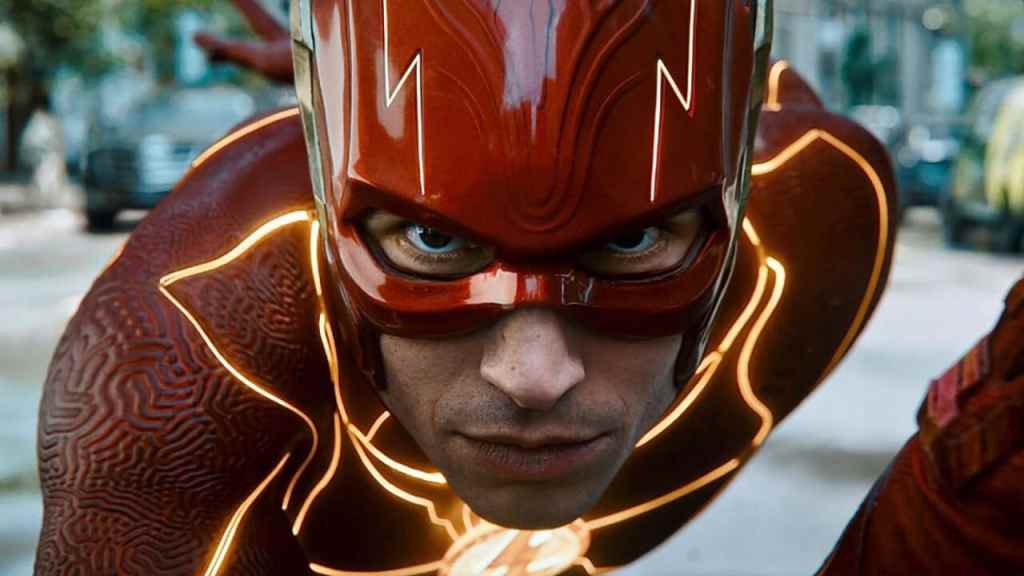
There was another assault charge stemming from another incident in Hawaii. Parents in North Dakota alleged Miller was grooming their daughter, displaying “cult-like and psychologically manipulative, controlling behavior.” The teenager in question, Tokata Iron Eyes, has denied Miller was grooming them. Another child, this time in Massachusetts, came forward to seek protection from Miller. Miller was also charged with burglary and sent taunting messages to the police.
There are documentaries to be made and books to be written about The Flash, how the project somehow powered through roadblock after roadblock. At virtually every stop along its journey from development to release, it seems like The Flash was a movie that simply did not want to get made. Hollywood history is full of similarly troubled productions that simply never made it across the finish line, from Alejandro Jodorowsky’s Dune to Tim Burton’s Superman Lives.
On one level, it seems strange that Warner Bros. never cut its losses on The Flash. After all, when the company merged with Discovery, executives took advantage of tax laws to write off completed movies like Batgirl and Scoob! Holiday Haunt. In the chaos of the merger and with the tumult following “the Great Netflix Correction,” it would have been very easy for Warner to completely drop The Flash, go back to the drawing board, and rework the concept from the ground up.
However, that didn’t happen. This is not how movies get made now. These projects don’t exist as stories, but as storing houses for intellectual property, reservoirs of content. The Flash doesn’t exist because anybody feels strongly about it; it exists because the studio has determined that there needs to be a Flash movie and this product fits all the minimum requirements. Warner Bros. needs to restructure its DC brand, and The Flash is a viable space in which to do that. It’s the Disney Investors’ Day presentation with a $220 million budget.
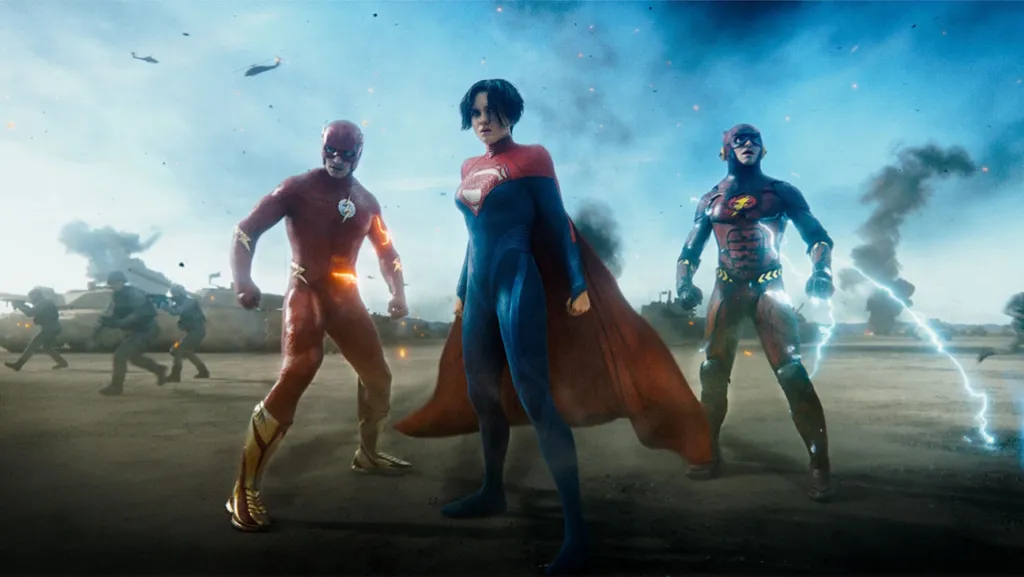
The film provides the requisite nostalgia hits, bringing back Michael Keaton and a computer-generated Christopher Reeve. It doesn’t matter that Keaton is playing a version of Batman who bears no meaningful resemblance to the delightful weirdo that he played in Batman and Batman Returns. The film plays the Danny Elfman soundtrack while a computer-generated stand-in for the 71-year-old actor bounces around the screen in a way that doesn’t fit at all with Burton’s aesthetic.
Keaton dutifully recites the catchphrases that executives returned after a quick internet search to determine what fans would want to hear. They both appear in trailers for the film: “I’m Batman,” and “You wanna get nuts?” It doesn’t matter that Keaton can’t muster any enthusiasm for the dialogue, any more than it doesn’t matter that The Flash can’t muster any enthusiasm for its characters or emotional arcs. All that matters is that he says the thing.
The film also brings back Michael Shannon as General Zod from Man of Steel, which ensures a press cycle much more interesting than the finished film. Talking candidly, Shannon likened the movie to “somebody playing with action figures.” Appropriately enough, the Flash’s redesigned costume makes him look like a shiny red action figure, in pristine condition, just ready to be mashed together onscreen with other marketable intellectual property.
There’s a cynicism to all of this. Man of Steel remains a deeply divisive movie, and The Flash pointedly does not include even a cameo from Henry Cavill, who was unceremoniously dumped as Superman, twice. To underscore the mercenary nature of all this, while Cavill’s Batman v Superman co-stars Ben Affleck and Gal Gadot appear in the flesh, Cavill’s likeness is rendered in computer-generated imagery. It’s not enough to hate something; one must still assert ownership of it.
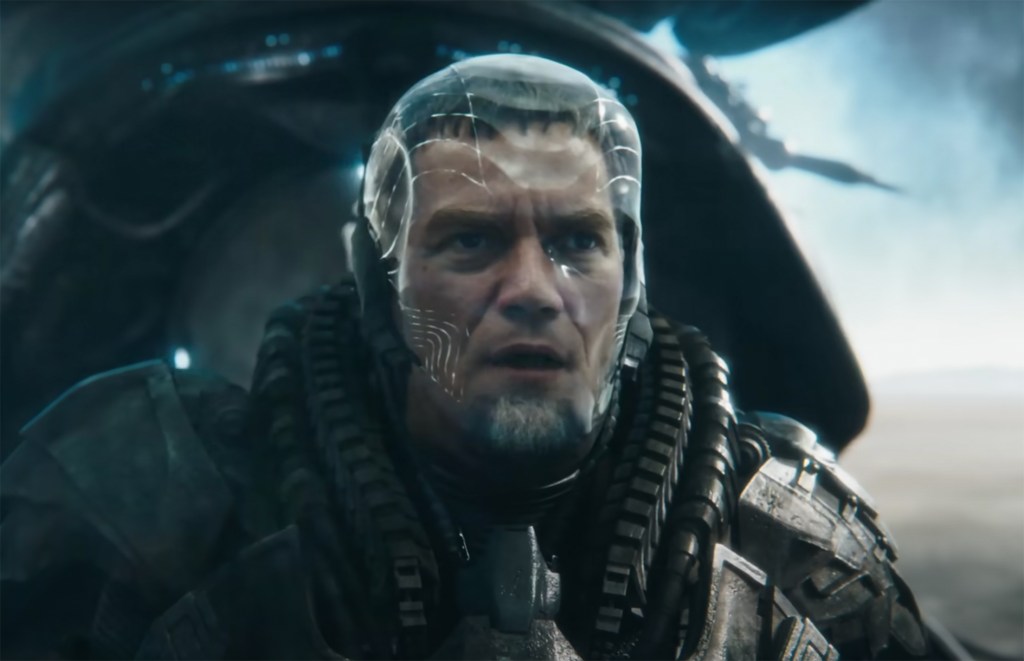
The Flash feels less like a movie and more like a shareholder’s memo, a reminder of all the things that Warner Bros. owns and all the actors that it has under contract. The movie itself is incidental. As much as The Flash has a plot rooted in Barry Allen’s (Miller) relationship to his mother (Maribel Verdú), that framework is really just a cup to hold the “content soup.” It isn’t a throughline so much as a bookend, with Barry’s mother entirely absent from the middle section of the film.
After all, The Flash isn’t a movie so much as a nexus of interconnected intellectual property. There were reshoots on James Wan’s Aquaman 2 swapping out Michael Keaton and Ben Affleck because it confused audiences in relation to the continuity of The Flash. (The answer is even more complicated: George Clooney.) It’s a catalog of recognizable brands owned by Warner Bros., the climax featuring computer-generated likenesses of Adam West, George Reeves, Christopher Reeve, and Helen Slater.
Warner Bros. committed to the movie with a reckless abandon. The controversies around Miller made it impossible to sell The Flash leading with the Flash, so publicity leaned hard into the fact that the movie featured at least two actors playing Batman, Michael Keaton and Ben Affleck. It was almost parodic. The trailers seemed to marginalize the Flash in his own movie. The first trailer opens with Michael Keaton’s narration, the second with a shot of Wayne Manor.
The marketing for The Flash is fascinating because it’s a marketing campaign entirely devoid of content. The character ostensibly at the center of the story is completely absent from publicity, as is their story. The movie turned to celebrity endorsements from high-profile figures like Tom Cruise or Stephen King. Studio executives stepped in to hype the movie, with CEO David Zaslav assuring reporters that it was “the best superhero movie (he’d) ever seen.”
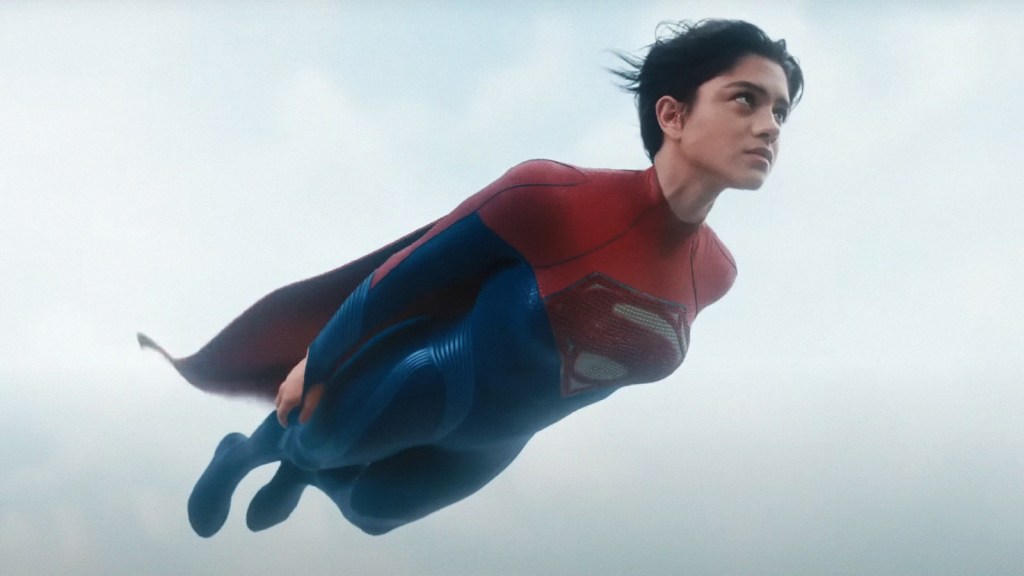
It’s all very ghoulish. It’s the culmination of the strategy that Warner Bros. adopted back in 2017, when it was implied that it would “avoid auteur directors who want final cut.” Andy Muschietti is credited as director on the film, but the film lacks any distinctive viewpoint. It is a statement from a studio, a movie that exists simply because market trends insisted that there should be a Flash movie, and because there was enough intellectual property lying around to cram into the runtime.
There is no humanity in The Flash, a movie that features a climax in which three versions of Ezra Miller talk to themselves in an awful-looking computer screensaver. This lack of humanity is reflected in the story’s rejection of its title character, understandably driven by the off-screen actions of the actor. It’s reflected in the lack of a distinct authorial viewpoint, even as the film shamelessly draws from director-driven properties like Tim Burton’s Batman or Zack Snyder’s Man of Steel. It’s reflected in the reduction of real flesh-and-blood human beings like Christopher Reeve to action figures or props.
In some ways, The Flash feels like the logical endpoint of Warner Bros.’ original sin, booting Zack Snyder off Justice League to replace him with Joss Whedon mid-production. The sane thing to do would have been to let Snyder finish his film and then reboot, but the studio’s refusal to accept that it couldn’t have the Justice League movie that it wanted right away set in motion a chain of events to which The Flash is a fitting and inevitable conclusion.
In some ways, this is the perfect Flash movie. It is loosely inspired by the 2011 event Flashpoint, which has become the default Flash story in the same way that Dark Phoenix is the default X-Men story and The Dark Knight Returns is the default Batman story. Flashpoint has already been adapted multiple times, as a season of television and as an animated film. However, Flashpoint was never really a story about the Flash. It was just an excuse to retool the company’s comics line.
In comic books, the Flash is frequently at the center of these sorts of big events like Crisis on Infinite Earths, which are often just excuses to restructure intellectual property within the loose framework of a narrative. In that above all else, The Flash is true to the comics that inspired it. It’s not so much a kid playing with action figures as the richest kid in town showing off his collection, while refusing to let anybody actually play with it.

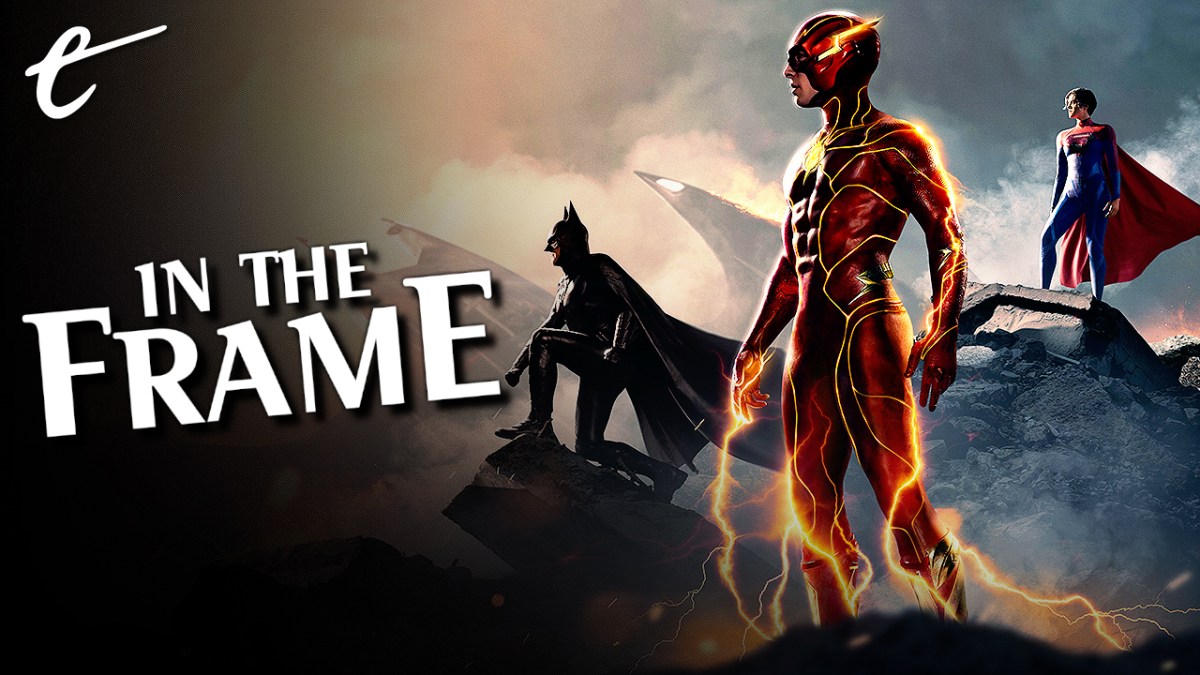




Published: Jun 16, 2023 11:00 am